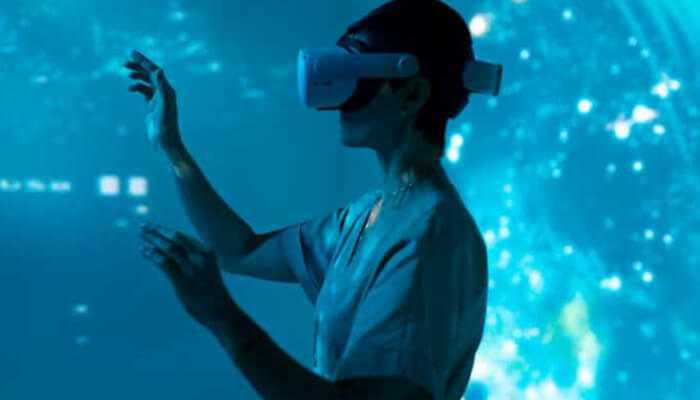Virtual reality used to feel like a cool but limited experiment—something that could transport you to a different place but didn’t necessarily make that place feel alive. But that’s changing fast. AI-powered virtual environments are pushing past the old boundaries, creating digital worlds that don’t just react to users but evolve and think on their own. These aren’t pre-programmed spaces with static interactions. They’re dynamic, self-improving landscapes that remember, adapt, and even surprise the people inside them.
From hyper-intelligent NPCs (non-playable characters) that form relationships with users to entire cities that grow and change based on behavior patterns, AI-driven virtual worlds are becoming more than just immersive—they’re becoming intelligent. And as technology keeps improving, the lines between digital and real are getting blurrier by the second.
AI Video Generators Are Transforming How We Experience Virtual Reality
Virtual reality has always relied on carefully crafted environments, but an AI video generator is making that process a lot faster and a lot more flexible. Instead of designers spending months creating every detail of a virtual world, AI can generate realistic landscapes, buildings, and entire cities in real time.
What makes this shift so exciting is the level of personalization it allows. Instead of walking through the same virtual world as everyone else, users can now experience environments that evolve based on their interests and choices. If a player spends more time in a specific area, AI can subtly adjust the surroundings to reflect their habits, making each experience unique.
And this doesn’t just apply to gaming. AI-generated virtual environments are being used for therapy, remote work, and even tourism. Imagine putting on a headset and instantly stepping into an AI-created version of your dream vacation, complete with shifting weather patterns and local NPCs who remember your past visits. The potential is limitless.
The Rise of Smart NPCs: When Virtual Reality Characters Feel Real
One of the biggest frustrations with traditional VR experiences is that NPCs often feel robotic. They follow scripts, respond with limited dialogue, and lack the ability to react naturally to unique situations. That’s where AI is making a major impact.
Thanks to AI writing tools, NPCs can now generate unscripted conversations, learn from interactions, and even form personalities over time. A shopkeeper in a VR game can remember a user’s previous purchases and recommend new items based on past choices. A detective in a mystery simulation can adapt their questioning strategy based on how a player responds.
This shift toward intelligence means NPCs are no longer just background filler. They’re becoming interactive, evolving characters who remember, react, and adapt. And in more advanced systems, they’re even able to create their own goals and motivations. That means users could be stepping into virtual worlds filled with self-driven characters, creating experiences that feel more like alternate realities than games.
AI-Driven Worlds That React to Users in Real Time
One of the most exciting aspects of AI-powered virtual environments is their ability to react in ways that feel natural and spontaneous. Instead of relying on pre-set conditions, these worlds can adjust dynamically based on user behavior.
If someone spends a lot of time exploring hidden areas in a VR game, AI can introduce new mysteries or unexpected challenges in response. If a virtual office space notices that employees are gathering in certain areas, it can reconfigure itself to better suit their workflow. Even digital cities can evolve, with AI determining which businesses thrive and which fade away based on player interaction.
This kind of adaptability makes virtual experiences more engaging, unpredictable, and, most importantly, personal. Users aren’t just stepping into pre-built worlds—they’re influencing them. And in turn, those worlds are learning from the users, making every experience unique.
The Role of AI Avatars in Gaming and Beyond
When people think of AI in virtual reality, they often picture smarter NPCs or evolving environments. But one of the biggest breakthroughs is happening on a more personal level—AI-driven avatars that are capable of learning and growing alongside their users.
An AI avatar in gaming isn’t just a digital representation of a player; it’s a self-improving companion that can adapt to individual playstyles, predict preferences, and even offer personalized strategies. These avatars can act as mentors, battle partners, or even rivals, creating a deeper, more interactive connection between players and the virtual world.
But gaming is just the beginning. AI avatars are being explored for everything from virtual fitness coaching to digital therapy. Instead of following generic workout routines, an AI-driven fitness trainer inside a VR headset can adapt to a user’s progress in real-time, pushing them harder when needed and adjusting workouts based on fatigue levels. In therapy settings, AI avatars can serve as interactive guides, helping users navigate anxiety, stress, or social situations in a controlled and responsive way.
This level of personalization is making AI avatars an essential part of the VR revolution, transforming the way people interact with digital spaces.
The Future of AI-Driven Virtual Reality
The idea of AI-powered worlds that think for themselves might sound like science fiction, but it’s happening right now. Virtual spaces are getting smarter, more adaptive, and more personalized. Whether it’s through self-improving environments, intelligent NPCs, or AI avatars that grow with users, the future of VR is no longer just about immersion—it’s about intelligence.
And as this technology continues to evolve, one thing is clear: Virtual reality isn’t just a place to visit anymore. It’s a living, thinking world of its own.



